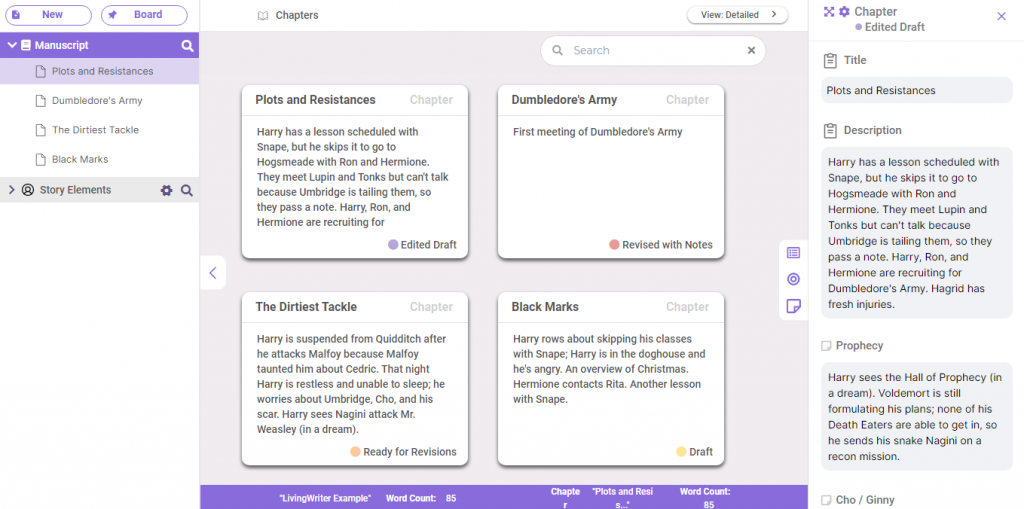How to Write a Synopsis for a Novel

After the grueling journey of writing your manuscript, you are now ready to pitch your novel to agents and publishers. However, the writing does not stop here; as part of the submission that you have to send out to the agents, you also have to write a synopsis for your novel.

A synopsis may just be a summary of your novel, but there are tips and methods you can employ to write an effective synopsis. If you are unsure on how to write a good synopsis that will give justice to your story and entice agents to consider your manuscript, then you’ve come to the right place to learn!
The Characteristics of a Synopsis
As what we mentioned earlier, a synopsis is a summary of your novel. You can expect a summary to have the entirety of your narrative arc, including your main character(s) and their motivations. As a summary, the synopsis should reveal all important plot points and details that will give a good overview of your manuscript, even the exciting plot twists and surprises.
The synopsis should be able to condense the major information, plot points, and unique elements of your story into a document that can run from 400 to 1000 words. This word count can vary across agents, so you might want to check up on the requirements of each agent, making a variation for each one.

It differs from the blurb, the promotional text at the back of the book. Although both serve the purposes of enticing readers to want to pick up your novel, they have different audiences. The blurb seeks to be a bit more mysterious to allure readers who would want to buy your book, while the synopsis aims to show the feasibility of your story as a marketable book for publishers, for them to continue reading your manuscript.
With that said, the exercise to write a synopsis is not as hard as writing your manuscript; the length is barely a fraction of your final novel. However, its significance is not any less than that of your novel. Even if some agents may opt not to read your synopsis, on the likely chance they’ll read it, it should be as well-written and professional as can be.
Tips and Tricks to Write a Synopsis
The synopsis is a professional document; there will be hard requirements you need to comply with such as word count and grammar tenses. However, you will still need to showcase your writing voice while playing around the confines of these requirements.
Word Count
First off, you might have to check up on each agent’s website or submission page to see the word count they expect out of the synopsis. Once you grab hold of this information, you have to honor that word count to the dot. If they specified this number of words, that means they will only have time for a synopsis of that length. If they did not specify, however, you can aim for 1-2 pages (1 is preferred by most) with single spacing, or 2-5 pages with double spacing. This should come around 400-1000 words.
The Present Tense

A synopsis is often written in the present tense, third person point of view, irrelevant of what your story uses. This gives off a professional vibe and narrative distance that allows agents to see your story in an objective view. It would make your synopsis sound akin to an elevator pitch, because in a way it is. However, as the synopsis is also a way to showcase your own writing skills, fill the document with your own writing voice, while maintaining the professional feel.
Narrate in Order

Your synopsis should follow the narration order in your novel, irrelevant of the chronology of the events in your story. At this point, you might want to fall back on the trusty parts of a plot, no matter if you used the Three Act Structure or the 27 Chapter Method. Your synopsis should have the important plot elements from each method in it, to make sure that your plot is fluid and solid despite being condensed into a significantly shorter document.
You need to make sure that you narrate as it happens in the novel. The order at which your novel presents the events and scenes trumps over the actual chronology of the story.
If you used LivingWriter’s outlining tools while writing your manuscript, then writing your synopsis can become so much easier. With the Outlines and Chapters highlighting the major parts of your story through your outline, you can easily grab the important plot points from your descriptions there.

Of course, you don’t have to grab each and every description from all of your chapters, but Outlines and Chapters gives you such an easy way to view your story in the framework/skeletal level, helping you out in finding the important scenes you will need to introduce in the synopsis.
LivingWriter’s outlining tools are useful not just for your manuscript, but also for reference when you’re doing something like writing a synopsis. A worthy investment for the future, we say!
“Tell, Don’t Show”

A great yet ironic tip to take note while writing the synopsis is “tell, don’t show.” Opposite to the mindset of writing your manuscript, you want to tell the agent what happens in your story, avoiding the inclusion of unnecessary details and subplots. You want the agents to absorb the story as effectively as possible, so you can freely let go of poetic prose and write as objectively as possible.
Go straight to the point, focusing primarily on the important details, such as the outcome of major events, rather than describing each punch and hit in an action-packed scene. Stay true to the narration of the main storyline, avoiding the subplots until their resolution ties up with the primary plot.
Character Introductions

If you are introducing a character, especially the main character, highlight the first mention with bold or capital letters. Each character introduction should let the reader know the important details about that character in a glance, especially mentioning the motivations and goals for the main character, so that the reader can come back to that point to remind them who that character was.
A quick tip is to emphasize the character’s name and enclose their age inside parentheses to help cut down on word count. By writing out character introductions like “Bob, the neighborhood association leader” or “LINDA (34), the preschool teacher,” the agent can easily keep track of the character throughout your synopsis.
With that said, you should also limit the number of characters you introduce in the synopsis. Unless that character plays a major role in the story, you can simply opt to say “the CIA agent” or “the gardener” instead to plot-insignificant character.
Stay Interesting

Of course, your summary is one of the first peeks the agent will see on your story. You don’t want to bore them with a mechanical retelling of the story’s events, despite the previous tips seeming to point toward such an outcome. Although we encourage you to strip the story bare of unnecessary detail, reservedly do so without forsaking your characters and their own development.
Aside from the external changes occurring in your story due to plot progression, you should also highlight important points of character development in the synopsis. By including the reactions and internal changes that a character experiences in your synopsis, you breathe life into the document, making it a true representation of your manuscript.
Write a Synopsis with LivingWriter
The synopsis can be tricky to write; you need to tell your entire story within a page or two, while trying to maintain and preserve the important themes you want to be delivered. Aside from that, its importance as one of the submissions to the agents might pressure you to make it as good as possible. However, with our tips above, you are sure to be on the road for a properly-written synopsis that can snag a good glance from the publishers.
Of course, if you want to ease your synopsis writing, then use LivingWriter while writing your manuscript. There’s just no other easy way to see your novel from a bird’s eye view aside from LivingWriter’s robust tools. See for yourself today and try it now!